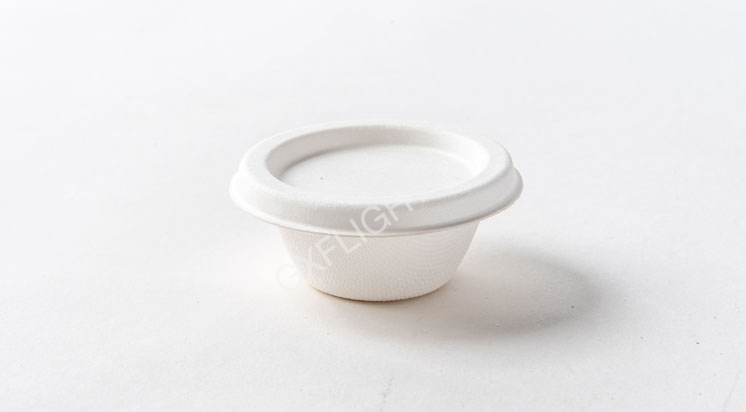
In an era where environmental protection is increasingly gaining attention, choosing eco-friendly tableware has become particularly important. This article will explore the environmental characteristics of sugarcane pulp tableware, understand its widespread applications and significant advantages in the modern dining and packaging industry.
Sugarcane pulp tableware is primarily made from bagasse, a by-product of sugarcane, which offers significant environmental advantages. Unlike traditional wood products, the production of sugarcane pulp tableware does not involve deforestation, thus not disrupting the ecological environment. As a renewable resource, bagasse has a relatively minimal environmental impact during its production process. After use, sugarcane pulp tableware can naturally decompose into carbon dioxide and water, leaving no lasting impact on the environment. These characteristics make sugarcane pulp tableware an ideal choice for sustainable development.
The production process of sugarcane pulp tableware uses waste paper pulp and other renewable plant fibers, such as wheat, reed, straw, bamboo, etc., which are inexpensive and widely available. More importantly, the entire production process of sugarcane pulp tableware generates no wastewater and no external waste discharge, significantly reducing environmental pollution. Additionally, sugarcane pulp tableware can completely degrade within 90 days under natural conditions, with the main component after degradation being organic matter, leaving no garbage residues or pollution.
The application range of sugarcane pulp tableware is extremely broad. It can be used not only in the dining industry but also as packaging materials for medical products, electronic appliances, glass ceramics, daily necessities, and cosmetics. This multi-purpose feature makes sugarcane pulp tableware a preferred material in many industries. Its strong plasticity allows for the design of different pulp-molded packaging structures according to the state and needs of the packaged products, meeting various market demands.
Sugarcane pulp tableware exhibits excellent properties, including water resistance, oil resistance, and superior cushioning. These features make it perform well in dining applications, being able to resist the effects of grease and moisture on tableware. In addition, sugarcane pulp tableware can withstand freezing environments down to -18℃ to baking environments up to 220℃, suitable for various scenarios including refrigeration, heating, and baking.
The fiber structure of sugarcane pulp tableware is enhanced to provide excellent cushioning, effectively protecting products from damage during transportation and storage. This durability and cushioning make sugarcane pulp tableware perform excellently in various packaging applications, especially when it comes to protecting fragile or valuable products.
With the increasing awareness of environmental protection, the market demand for sugarcane pulp tableware is also continuously growing. Gxflight, as a leading inflight supplies provider, is committed to offering innovative eco-friendly tableware solutions. We collaborate with airlines worldwide to not only enhance passenger dining experiences but also promote the implementation of green initiatives. By promoting sugarcane pulp tableware, we hope to foster sustainable development globally and contribute to environmental protection.